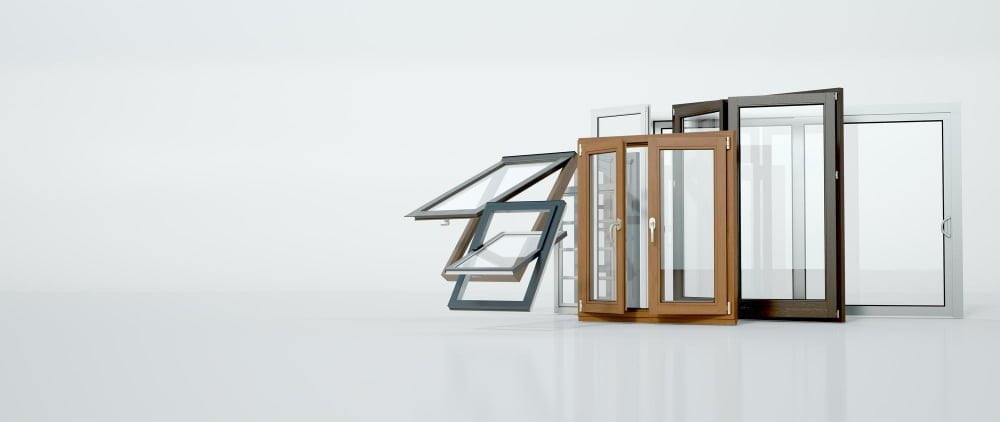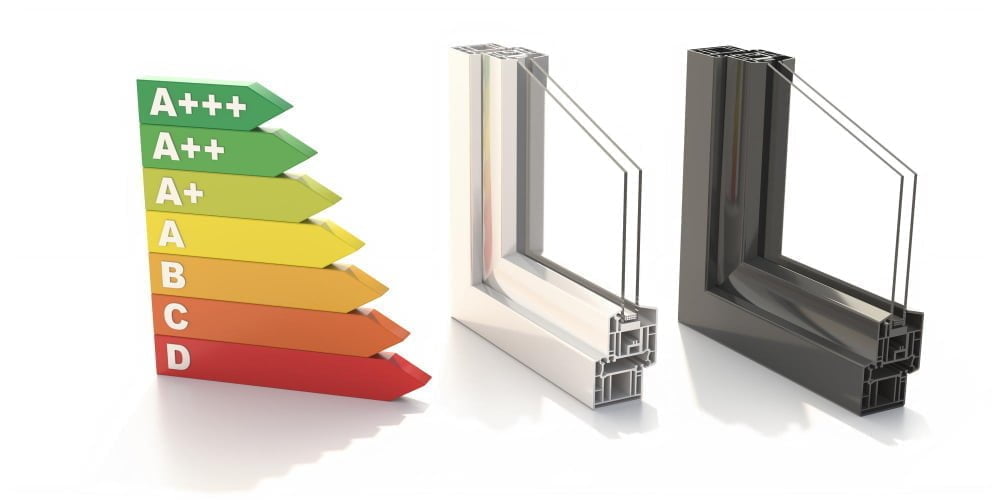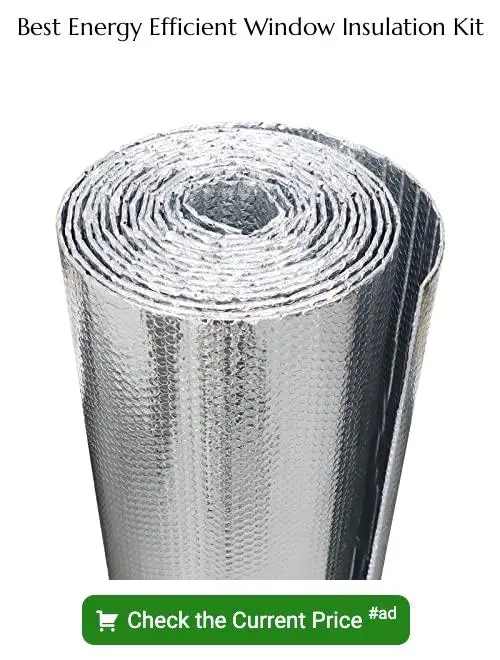Discover how to save money through energy-efficient window rebate programs.
As a homeowner, I know the struggle of wanting to make upgrades to your house but feeling like it’s just not in the budget. One upgrade that can make a big difference in both your home’s appearance and energy efficiency is replacing old, drafty windows.
But what if I told you there was a way to save money on this upgrade?
I recently discovered energy-efficient window rebate programs and was blown away by how much money homeowners can save by taking advantage of them.
Not only are these programs available in many areas across the country, but they offer significant rebates for upgrading to energy-efficient windows.
In this blog post, I’ll be sharing everything you need to know about these rebate programs – from how they work and who qualifies for them, to tips on finding the best deals and maximizing your savings. So sit back, grab a cup of coffee (or tea!), and get ready to learn how you can make an investment in your home while also saving some serious cash!
Introduction to Rebate Programs

If you’re like me, the thought of upgrading your windows may seem daunting. Not only is it a significant investment, but there are so many options to choose from that it can be overwhelming.
However, with energy-efficient window rebate programs available in many areas across the country, this upgrade suddenly becomes much more accessible and affordable.
Rebate programs offer homeowners financial incentives for making energy-efficient upgrades to their homes – including replacing old windows with new ones that meet specific efficiency standards. These rebates can range from a few hundred dollars up to thousands of dollars depending on where you live and which program(s) you qualify for.
But how do these rebate programs work? Typically, they are offered by utility companies or government agencies as part of an effort to reduce overall energy consumption and greenhouse gas emissions.
By incentivizing homeowners to make upgrades that will save them money on their monthly bills while also reducing their carbon footprint, these organizations hope to encourage widespread adoption of more sustainable practices.
Now that we understand what rebate programs are and why they exist let’s dive into how they can help us save money when upgrading our home’s windows!
Types of Energy-Efficient Windows

There are several options available on the market, each with its own set of benefits and drawbacks.
One popular option is double-pane windows. These windows have two panes of glass separated by a layer of gas or air, which helps reduce heat transfer and improve insulation.
Another option is triple-pane windows, which offer even more insulation than double-pane due to an additional layer of glass.
Low-E (low-emissivity) coatings are another feature commonly found in energy-efficient windows. These coatings help reflect infrared light while allowing visible light through – meaning they can keep your home cooler in the summer and warmer in the winter without sacrificing natural lighting.
There are also window frames made from materials like vinyl or fiberglass that offer better insulation than traditional wood frames.
By understanding these different types of energy-efficient windows and their features, you can make an informed decision when selecting new ones for your home – ultimately maximizing both your savings potential through rebate programs as well as improving overall comfort levels within your living space!
Eligibility Criteria for Rebates

Now that you know about the existence of energy-efficient window rebate programs, it’s important to understand if you qualify for them. Eligibility criteria vary depending on where you live and which program(s) you’re applying for, but there are some general guidelines to keep in mind.
Firstly, most programs require that your new windows meet certain energy efficiency standards set by organizations like ENERGY STAR or the National Fenestration Rating Council (NFRC). These standards ensure that your new windows will significantly reduce heat loss during winter months and prevent unwanted heat gain during summer months.
Secondly, many rebate programs have income requirements. Some may only be available to low-income households while others may offer higher rebates based on income level.
It’s important to check with each program individually as eligibility can differ greatly between them.
Lastly, some states or municipalities have specific requirements such as a minimum number of windows being replaced or a maximum amount of money per household eligible for rebates.
By understanding these eligibility criteria beforehand and doing research into which programs are available in your area, homeowners can maximize their chances of qualifying for significant savings when upgrading their home’s windows.
How to Apply for Window Rebates

The process may vary depending on where you live and which program(s) you’re applying for, but there are some general steps that most homeowners will need to follow.
First, research the available programs in your area. You can start by checking with your local utility company or state government website.
Some popular national programs include ENERGY STAR® and the U.S Department of Energy’s Weatherization Assistance Program.
Next, review the eligibility requirements for each program carefully. Most rebates require specific types of windows (such as double-paned or low-E glass), minimum energy efficiency ratings (like a U-factor below 0.30), and professional installation by a certified contractor.
Once you’ve determined which program(s) you qualify for, gather all necessary documentation such as proof of purchase/installation and any required forms or applications from the rebate provider.
Submit your application according to the instructions provided by each individual program – this could be online through their website or via mail-in form – along with all required documentation within their specified timeframe.
By following these steps carefully when applying for window rebates in your area – not only will it help ensure that everything goes smoothly during this process but also maximize potential savings!
Top Window Rebate Programs

Now that you know the benefits of energy-efficient window rebate programs, let’s take a closer look at some of the top programs available. One program that stands out is ENERGY STAR®’s Most Efficient Program, which offers rebates for windows and doors that meet their strict efficiency standards.
Another popular program is offered by the U.S Department of Energy (DOE), which provides rebates for homeowners who upgrade to energy-efficient windows through their Home Performance with ENERGY STAR® Program.
In addition to these national programs, many states and local utilities offer their own rebate programs as well. For example, California residents can take advantage of the California Energy Commission’s Residential New Construction Rebate Program or Southern California Gas Company’s Windows Upgrade Rebate Program.
It may seem overwhelming trying to navigate all these different options but don’t worry! Many websites like DSIRE (Database of State Incentives for Renewables & Efficiency) provide comprehensive lists and information on available rebate programs in your area.
By taking advantage of these various window rebate opportunities you can save hundreds if not thousands on upgrading your home’s windows while also reducing your carbon footprint.
Calculating Potential Savings

Now that you know about energy-efficient window rebate programs, you may be wondering just how much money you can save by taking advantage of them. The answer is: it depends on a few factors.
Firstly, the amount of your potential savings will depend on the specific program in your area. Some programs offer rebates based on a percentage of the total cost of upgrading to energy-efficient windows, while others offer flat-rate rebates per window or per square foot.
Secondly, your potential savings will also depend on how many windows need to be replaced and what type of windows they are. For example, replacing single-pane windows with double-pane ones can result in significant energy savings and therefore higher rebate amounts.
To get an idea of how much money you could potentially save through these rebate programs, start by researching available options in your area and determining which ones apply to your situation. Then calculate the estimated cost for upgrading all eligible windows in your home and multiply that number by the applicable rebate percentage or flat rate offered by each program.
By doing this research upfront and calculating potential savings before making any purchases or upgrades, homeowners can make informed decisions about their investments while maximizing their chances for big returns from these valuable incentive programs!
Tips for Maximizing Benefits

Some things you can do now:
- Research available rebates: Not all rebate programs are created equal, so it’s important to do your research and find out what options are available in your area.
- Check with local utility companies or government agencies for information on any current rebate offers.
- Choose high-quality windows: While it may be tempting to go for the cheapest option when upgrading your windows, choosing high-quality energy-efficient windows will not only save you money in the long run but also increase the amount of money you can receive through a rebate program.
- Work with a reputable contractor: When installing new windows, make sure to work with a licensed and insured contractor who has experience working with energy-efficient products and knows how to properly install them.
- Keep records of everything: From receipts for materials and labor costs to documentation from the manufacturer regarding product efficiency ratings – keep track of everything related to your window upgrade project as this will come in handy when applying for rebates later on.
By following these tips, homeowners can ensure they’re getting maximum benefits from their investment while also contributing towards reducing their carbon footprint by making environmentally-friendly choices!
Related Stories
- Energy-efficient Window Tax Credits and Incentives: Save Money While Going Green
- Cost-effectiveness of Energy-efficient Windows: Breaking Down the Numbers
- Case Studies of Energy-efficient Window Projects: Success Stories to Inspire
- Energy-efficient Window Materials: Choosing the Best for Your Home
- Window Glazing and Energy Efficiency: Exploring the Possibilities
Recap

